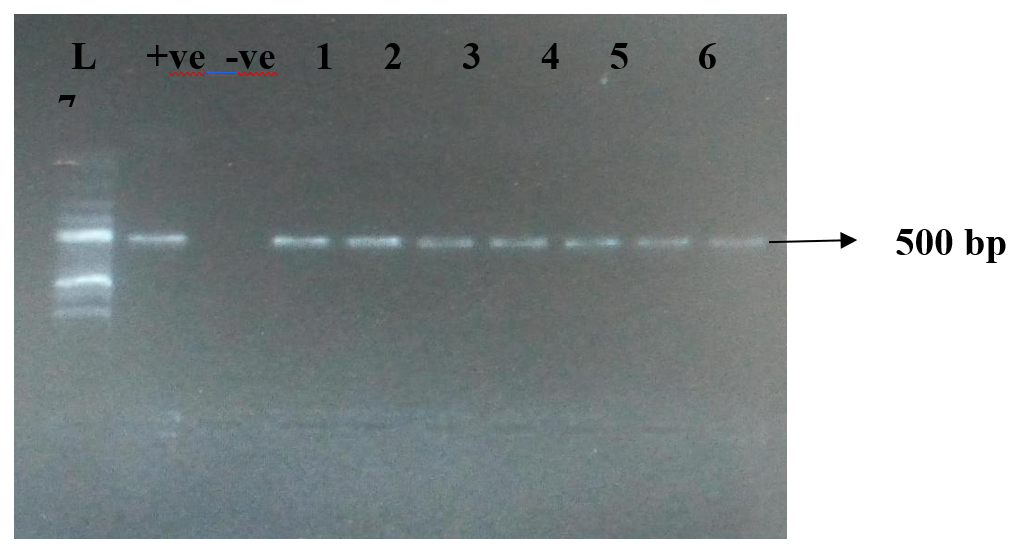GENOTYPIC CHARACTERIZATION OF PSEUDOMONAS AERUGINOSA FROM POINT-OF-SALES DEVICES IN LOKOJA, NIGERIA
Keywords:
Radiation, Radio-frequency, Smartphones, Spectrum Analyzer, Human healthAbstract
The presence of Pseudomonas aeruginosa on shared frequently used surfaces, such as Point-of-Sales (POS) devices present serious public health problem. This study assessed P. aeruginosa on POS devices frequently used within Lokoja metropolis, with the aim of determining the presence of antibiotic resistance and virulence genes in the P. aeruginosa. Following standard procedures, Seventy-two POS devices were randomly sampled using sterile swabs soaked in peptone water and cultured on sterile agar plates. Biochemical characterization of isolates was carried out while antibiotics susceptibility testing was carried out using the Kirby-Bauer disc diffusion method. Some resistance and virulence genes of P. aeruginosa were detected using polymerase chain reaction (PCR) assay. Bacterial isolates were characterized as Staphylococcus aureus (32.4%), Klebsiella pneumoniae (21.9%), Pseudomonas aeruginosa (17.2%), Escherichia coli (14.2%), Bacillus subtilis (10.1%), Enterobacter spp. (2.4 %) and Enterococcus sp. (1.8%). Pseudomonas aeruginosa isolates displayed antibiotic resistance against tetracyclines (58.6%), followed by ceftazidime (51.7%), gentamicin (48.3%), cefepime (48.3%), ceftriaxone (48.3%), cefoxitin (44.8%), levofloxacin (41.2%), ciprofloxacin (37.9%), amoxicillin-clavulanic acid (37.9%) and imipenem (24.1%). For the virulence genes, 72.4%, 38%, 28% of the Pseudomonas aeruginosa strains were positive for OprL, toxA and lasB, respectively while for the antibiotic resistance genes, 14% were positive for blaVIM and 10.3% for blaIMP. This study reveals the presence of pathogenic P. aeruginosa on POS devices with their virulence genes and antibiotics resistance genes. This emphasizes the health threat associated with shared surfaces such as the POS devices. Thus, users must maintain sanitary and hygienic practices while using these devices.

Published
How to Cite
Issue
Section
Copyright (c) 2025 Motunrayo Yemisi Jibola-Shittu, Gbolabo Odewale, Mela Ilu Luka, Joshua Atabo Odoh, Hannatu Eleojo Mary Bala, Aminat Bukola Kehinde

This work is licensed under a Creative Commons Attribution 4.0 International License.
How to Cite
Most read articles by the same author(s)
- Gbolabo Odewale, Motunrayo Yemisi Jibola-Shittu, Hannatu Eleojo Mary Bala, Rose Akogwu, Latifat Oyinlola Raimi, ANTIBIOTIC SUSCEPTIBILITY AND DETECTION OF EXTENDED-SPECTRUM B-LACTAMASE GENES IN GRAM-NEGATIVE BACTERIA ISOLATED FROM AUTOMATED TELLER MACHINES , FUDMA JOURNAL OF SCIENCES: Vol. 8 No. 1 (2024): FUDMA Journal of Sciences - Vol. 8 No. 1
- Abiodun A. Akindele, Elizabeth O. Aro, Richard O. Ojedele, Gbolabo Odewale, Oloyede S. Bolaji, MOLECULAR PROFILING AND ANTIMICROBIAL RESISTANCE PATTERNS OF EXTENDED-SPECTRUM BETA-LACTAMASE-PRODUCING ESCHERICHIA COLI ISOLATES FROM CLINICAL SAMPLES IN SOUTHWESTERN NIGERIA , FUDMA JOURNAL OF SCIENCES: Vol. 9 No. 8 (2025): FUDMA Journal of Sciences - Vol. 9 No. 8




